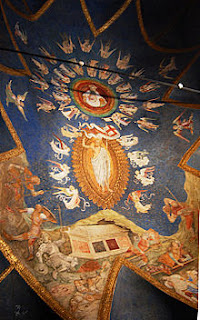Valentino Mazzola – footballer
Tragic star may have been Italy’s greatest player
The footballer Valentino Mazzola, captain of the mighty Torino team of the 1940s, was born on this day in 1919 in Cassano d’Adda, a town in Lombardy about 30km (19 miles) northeast of Milan. Mazzola, a multi-talented player who was primarily an attacking midfielder but who was comfortable in any position on the field, led the team known as Il Grande Torino to five Serie A titles in seven seasons between 1942 and 1949. He scored 109 goals in 231 Serie A appearances for Venezia and Torino and had become the fulcrum of the Italy national team, coached by the legendary double World Cup-winner Vittorio Pozzo. In just over a decade at the top level of the Italian game he achieved considerable success and some who saw him play believe he was the country’s greatest footballer of all time. His life was cut short, however, when he and most of the Grande Torino team – and at the same time the Italian national team – were killed when a plane carrying them home from a friendly in Portugal crashed in thick fog on its approach to Turin airport on May 4, 1949. The Superga Disaster – so-called because the aircraft collided with the rear wall of the Basilica of Superga, which stands on a hill overlooking the city – claimed the lives of 18 players. Read more…
_________________________________________________________________
Giovanni Lanfranco - painter
Artist from Parma whose technique set new standards
The painter Giovanni Lanfranco, whom some critics regard as the equal of Pietro da Cortona and Guercino (Giovanni Francesco Barbieri) among the leading masters of High Baroque painting in Rome, was born on this day in 1582 in Parma. A master of techniques for creating illusion, such as trompe l'oeil and foreshortening, he had a major influence on 17th century painting in Naples also, inspiring the likes of Mattia Preti, Luca Giordano and Francesco Solimena. Lanfranco is best known for his Assumption of the Virgin (1625-7) in the duomo of Sant’Andrea della Valle in Rome, the altar fresco of the Navicella (1627-28) in St Peter’s Basilica, the cupola of the Gesù Nuovo church (1634-36) in Naples and the fresco of the Cappella del Tesoro, in Naples Cathedral (1643). His St Mary Magdalen Transported to Heaven (c.1605), currently housed in the Capodimonte Museum in Naples, is another outstanding example of his work, as is The Ecstasy of the Blessed Margaret of Cortona (1622), in the Pitti Palace in Florence. Lanfranco’s dome frescoes were influenced by the work of Antonio da Correggio, the master of chiaroscuro. Read more…
________________________________________________________________
Hebrew Bible in print for first time
Bologna printer makes history
The first printed edition of the Hebrew Bible was completed in Bologna on this day in 1482. Specifically, the edition was the Pentateuch, or Torah, which consists of the first five books of the Christian and Jewish Bibles - Genesis, Exodus, Leviticus, Numbers and Deuteronomy. Torah, in Hebrew, means 'instruction'. The book was given that name because the stories within it, which essentially form the opening narrative of the history of the Jewish people, and the interpretations offered of them, were intended to set out the moral and religious obligations fundamental to the Jewish way of life. The book was the work of the Italian-Jewish printer Abraham ben Hayyim dei Tintori, from Pesaro. The text consisted of large, clear square letters, accompanied by a translation in the Jewish biblical language Aramaic and a commentary by Rashi, who had been the foremost biblical commentator of the Middle Ages. It was published and financed by Joseph ben Abraham, a member of the Caravita banking family in Bologna. The editor was the Hebrew scholar Yosef Hayyim ben Aaron, of Strasbourg. The printing press had been invented in Germany in 1439. Read more…
_______________________________________________________________
Gabriele Allegra – friar and scholar
Sicilian who learnt Chinese to carry out his life’s work
The Blessed Gabriele Allegra, a Franciscan friar who translated the entire Catholic Bible into Chinese, is remembered on this day every year. He was born Giovanni Stefano Allegra in San Giovanni la Punta in the province of Catania in Sicily in 1907 and he entered the Franciscan seminary in Acireale in 1918. Gabriele Allegra was inspired to carry out his life’s work after attending a celebration for another Franciscan who had attempted a translation of the Bible into Chinese in the 14th century. For the next 40 years of his life the friar devoted himself to his own translation. Gabriele Allegra was ordained a priest in 1930 and set sail for China. On his arrival he started to learn Chinese. With the help of his Chinese teacher he prepared a first draft of his translation of the Bible in 1947 but it was not until 1968 that his one volume Chinese Bible was published for the first time. Gabriele Allegra died on 26 January 1976 in Hong Kong. Although he was primarily a scholar, he had also helped the poor, the sick and lepers along the way. He was declared Venerable in 1994. Read more…
Home

























